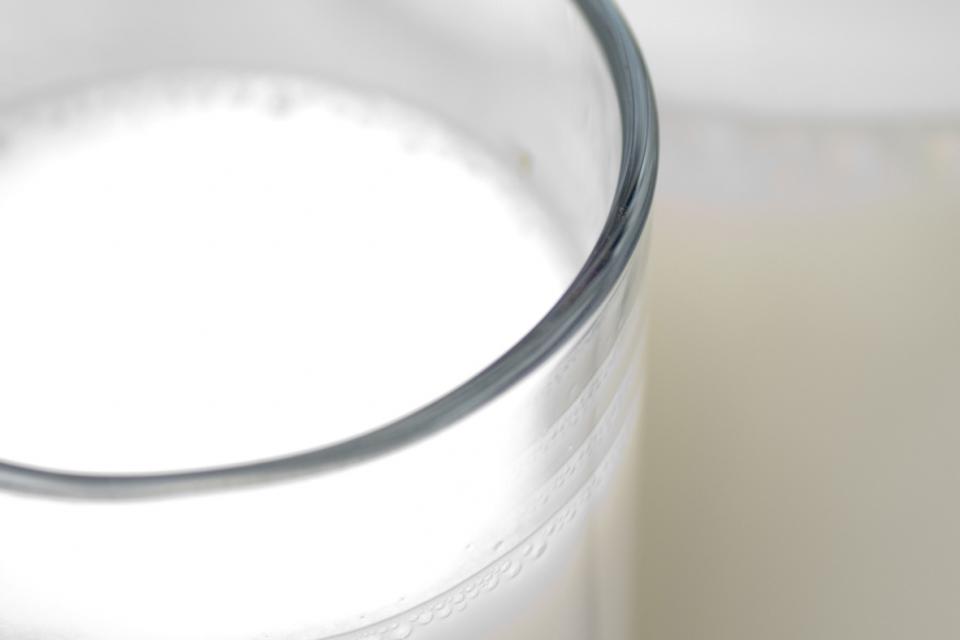In Canada, milk is fortified with vitamin D3. This form of vitamin D is considered to be the most effective for achieving optimal vitamin D status.
- According to a 2012 meta-analysis of randomized controlled trials that compared the effects of vitamin D3 and D2 supplementation, vitamin D3 is more efficacious than vitamin D2 at raising concentrations of serum 25-hydroxyvitamin D (an indicator of vitamin D status).1
- Similar findings have been obtained from more recent randomized, placebo-controlled, trials. These studies have also found that vitamin D3 is more effective than vitamin D2 in increasing and maintaining higher serum concentrations of 25-hydroxyvitamin D.2,3 Furthermore, it has been demonstrated that vitamin D3 supplements may be more potent than vitamin D2 supplements in raising serum 25-hydroxyvitamin D levels in older adults as well as in maintaining these levels during the wintertime.4,5
- Some studies have shown that daily administration or a loading dose of vitamin D2 may be equally as effective as vitamin D3 in raising and maintaining serum concentrations of 25-hydroxyvitamin D in the short term; however, in the long term, vitamin D3 appears to better sustain these levels. 5-7
- Additionally, studies have shown that older adults who take 400 to 800 IU of vitamin D3 per day maintain their bone density and experience fewer fractures.8
Several mechanisms could explain the superior biological activity of vitamin D3 to that of vitamin D2. A plausible explanation is that vitamin D3 has a higher affinity for vitamin D binding protein as well as for the vitamin D receptor. It has also been suggested that vitamin D3 is the preferred substrate for the hydroxylase enzyme in the liver (which converts vitamin D to 25-hydroxyvitamin D).8 These are critical factors in the activation of vitamin D in the body. Moreover, vitamin D2 may have a shorter half-life than vitamin D3.9
It should be noted that, in addition to its lower bioefficacy, vitamin D2 is considerably less stable than vitamin D3, particularly when in a crystalline powder form that is subjected to varying temperatures, humidity levels and even storage methods. Furthermore, there is a greater risk of toxicity with vitamin D2.8
Overall, given the scientific evidence on the superior bioavailability of vitamin D3 and its efficacy in terms of the treatment and prevention of vitamin D insufficiency, vitamin D3 may be the preferred form for food fortification.
References
- Tripkovic L et al. Comparison of vitamin D2 and vitamin D3 supplementation in raising serum 25-hydroxyvitamin D status: a systematic review and meta-analysis. Am J Clin Nutr 2012;95:1357-1364.
- Lehmann U et al. Bioavailability of vitamin D2 and D3 in healthy volunteers, a randomized placebo-controlled trial. J Clin Endocrinol Metab 2013;98:4339-4345.
- Itkonen ST et al. Effects of vitamin D2-fortified bread v. supplementation with vitamin D2 or D3 on serum 25-hydroxyvitamin D metabolites: an 8-week randomised-controlled trial in young adult Finnish women. Br J Nutr 2016;115:1232-1239.
- Cashman KD et al. Relative effectiveness of oral 25-hydroxyvitamin D3 and vitamin D3 in raising wintertime serum 25-hydroxyvitamin D in older adults. Am J Clin Nutr 2012;95:1350-1356.
- Logan VF et al. Long-term vitamin D3 supplementation is more effective than vitamin D2 in maintaining serum 25-hydroxyvitamin D status over the winter months. Br J Nutr 2013;109:1082-1088.
- Oliveri B et al. Vitamin D3 seems more appropriate than D2 to sustain adequate levels of 25OHD: a pharmacokinetic approach. Eur J Clin Nutr 2015;69:697-702.
- Holick MF et al. Vitamin D2 is as effective as vitamin D3 in maintaining circulating concentrations of 25-hydroxyvitamin D. J Clin Endocrinol Metab 2008;93:677-681.
- Houghton LA and Vieth R. The case against ergocalciferol (vitamin D2) as a vitamin supplement. Am J Clin Nutr 2006;84:694-697.
- Jones KS et al. 25(OH)D2 half-life is shorter than 25(OH)D3 half-life and is influenced by DBP concentration and genotype. J Clin Endocrinol Metab 2014;99:3373-3381.


